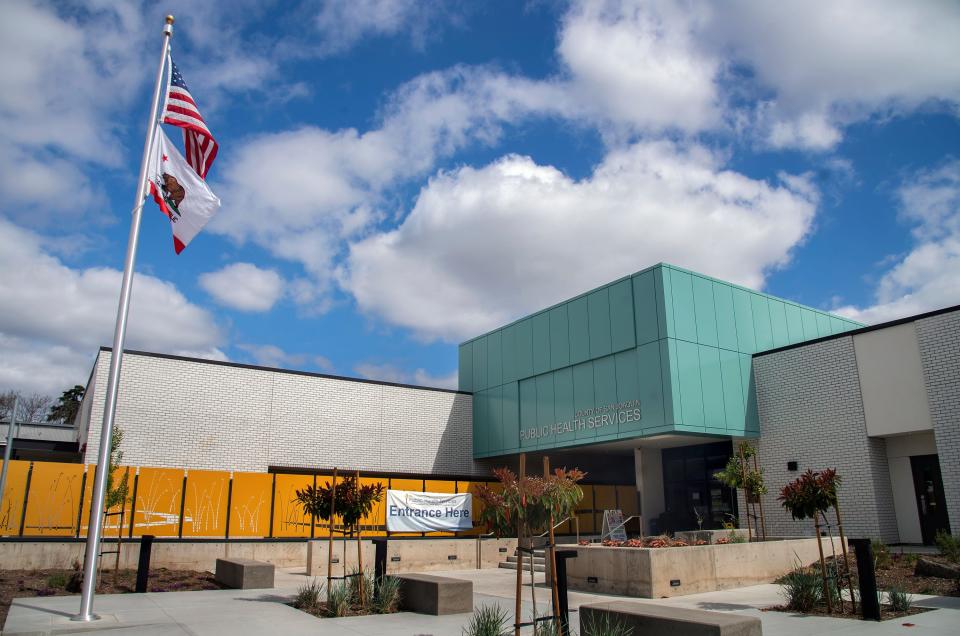Once the U.S.'s leading cause of death, tuberculosis has spiked in San Joaquin County
San Joaquin County saw a 55% spike in cases of one particular infectious disease last year — and it’s probably not one you’d expect.
Tuberculosis — once called by its old-fashioned names “consumption” and “the white death” — was formerly the leading cause of death in the U.S., according to California’s public health department. Back in the 1800s, the disease killed one in seven people in the U.S. and Europe, according to the Centers for Disease Control and Prevention.

And while tuberculosis is no longer a top cause of death in the U.S., California saw a 15% “substantial increase” in cases last year from about 1,840 to roughly 2,110, state officials said. San Joaquin County’s spike was even greater, local officials said.
A major factor in the spike may be a silent, non-infectious form of the disease that has no obvious symptoms, local experts said. One may not realize they are ill until it develops into active tuberculosis.
It's one reason local health officials are urging San Joaquin County residents with certain risk factors to get tested, even if they don't feel sick.
A 'latent' illness
Over 80% of California's cases last year started out as what's called “latent tuberculosis,” according to state health officials.
In general, the “life cycle of tuberculosis in the body” starts when “someone with active tuberculosis coughs, or sings, or speaks, (and) those near them breathe in the bacteria,” Dr. Cristina Almeida, a tuberculosis expert with San Joaquin County Public Health Services, said Tuesday.
As the bacteria multiplies, the person may begin coughing — possibly with blood in their phlegm — and losing weight, as well as experiencing fatigue, fever or night sweats, Almeida said.
Some people's immune systems manage to contain the disease, and they feel nothing: hence the term “latent tuberculosis.” Latent tuberculosis is not contagious, Almeida said.
However, if "they have some shock to their immune system” — such as certain chronic illnesses, or immune-suppressing medications — latent tuberculosis can escalate into active tuberculosis, she said.
Why has tuberculosis increased?
Until 2022, tuberculosis cases had been falling in San Joaquin County for three years, state data shows.
But from 2022 to 2023, cases jumped from 33 to 51, a 55% increase, county officials stated.
Although the causes of the increase aren't confirmed, one factor may be that people are returning to the doctor after the COVID-19 lockdowns and finally getting tested for tuberculosis, according to Almeida.
Another factor may be that people have started traveling again, including to countries where the disease is poorly controlled and they’re more likely to catch active tuberculosis, she said.
In fact, people who have lived abroad for a month or more at any point face a higher risk of developing tuberculosis, California health officials stated. Places with higher tuberculosis rates include eastern Europe, the Middle East, Asia, Africa, Central and South America and Mexico.
Not enough testing
Yet another likely factor behind San Joaquin County’s recent tuberculosis spike is poor tracking of the disease when it’s still in its silent, symptom-less form, according to Almeida.
“Latent ... tuberculosis disease is not receiving enough testing and treatment,” she said Tuesday.
“People don’t have the obvious symptoms, so they don’t think to get tested,” she added.
Last month, California officials told doctors they should screen patients who have risk factors for tuberculosis, including having lived abroad; having been homeless or incarcerated; having a suppressed immune system; or who have ever been in close contact with someone with active tuberculosis.
No vaccine can fully prevent tuberculosis, according to the CDC. One in six Californians diagnosed with tuberculosis die within five years despite treatment, according to state health officials.
Yet “latent tuberculosis can be treated,” Almeida said.
"There was a time ... when TB wasn’t as well funded as it should be," she said. "Once it received more funding, then obviously the cases went down."
"It's intimately tied to the resources that are put into the system," she said.
Record reporter Aaron Leathley covers government accountability. She can be reached at aleathley@recordnet.com or on Twitter @LeathleyAaron. Support local news, subscribe to The Stockton Record at https://www.recordnet.com/subscribenow.
This article originally appeared on The Record: Tuberculosis cases spiked in Stockton, SJ County, California in 2023

